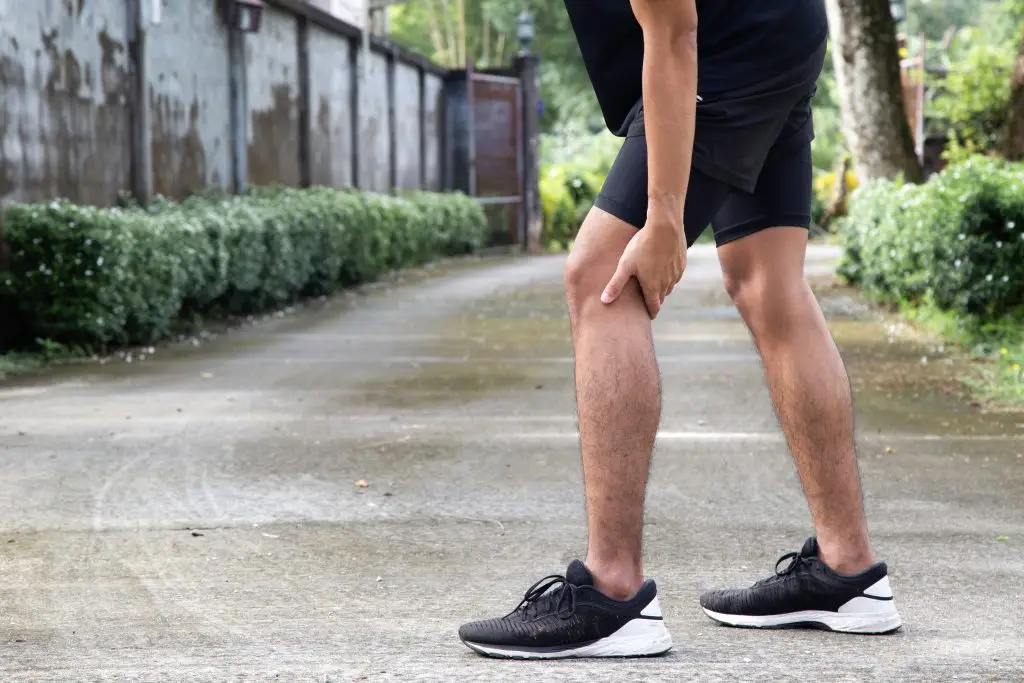Knee pain is the bane of many runners’ existence. From shin splints to meniscus tears, there’s a lot that can go wrong even as you take precautions and gain experience running or being active.
If you’ve recently started feeling a sharp or burning pain on the outer side of your knee, especially during or after a run, you might be dealing with iliotibial band syndrome (commonly known as IT band syndrome or ITBS). This frustrating condition is one of the most common overuse injuries among runners and older folks with active lifestyles. Fortunately, it’s treatable and can often be prevented with a few tweaks to your walking or running technique.
What is the iliotibial band?
The iliotibial band is a large tendon that extends from the top of the pelvis to the outer part of each knee. (You have two IT bands, one on the right and one on the left.) The IT band stabilizes your knee and supports lateral (side-to-side) movement and stability.
However, like many moving parts within your knees, it can become irritated if overused or strained. When this happens, the tendon tightens, causing friction as it rubs against the bone or soft tissue near your knee. This is what leads to the telltale pain associated with iliotibial band syndrome.
Symptoms of IT band syndrome
There’s a joke in there about the “IT band” (some say their music is actually pretty good), but for those who are dealing with iliotibial pain in one or both legs, it’s rarely a laughing matter.
Many of the symptoms of IT band syndrome affect the outside of the knee, meaning it tends to be easy to recognize. Symptoms include:
- Sharp or burning pain on the outside of the knee – This pain is the hallmark symptom of ITBS and is typically worse when running downhill or during longer runs.
- Tenderness and swelling near the outer knee – You may notice that the side of your knee feels inflamed or sensitive to the touch.
- Pain during repetitive knee movement – Activities like running, cycling, or even walking up and down stairs can exacerbate the discomfort.
- “Snapping” sensation – Some people report feeling or hearing a snapping or popping sensation in the knee as the IT band rubs across other parts of the knee.
- Pain that worsens over time – Unlike an acute injury, IT band syndrome pain usually develops gradually—with increasing discomfort as you continue pushing through it.
Other causes of knee pain such as arthritis do not affect the outside of the knee as directly as IT band syndrome. That said, if you’re experiencing gradually worsening knee pain and can’t seem to shake it by treating it at home, talking to a physical therapist is a simple next step to getting relief.
Ways to treat iliotibial band syndrome
The good news is that IT band syndrome is treatable, and most people with this diagnosis make a full recovery with the proper care. Here are some tried-and-true iliotibial band treatment options to help get out of pain and back on track:
1. Rest and reduce activity
It may sound obvious, but the first step to recovery is giving your body time to heal. Temporarily reduce or stop any activities that aggravate your IT band, such as running or cycling. This doesn’t mean you have to stop exercising completely if you don’t want to—gentle cross-training exercises like swimming can help you stay active without worsening symptoms.
2. Ice and anti-inflammatory treatments
Applying a cold pack to your outer knee can help reduce inflammation and relieve pain. Ice the affected area for 15–20 minutes several times a day, especially after physical activity. Over-the-counter anti-inflammatory medications like ibuprofen can also be helpful, but consult your healthcare provider before taking them regularly.
3. Stretching and foam rolling
Since the root cause of ITBS is usually tension in either your leg muscles or the tendon itself, incorporating regular stretching and foam rolling into your routine can be incredibly beneficial.
4. Assess your strength training
Weakness in your glutes, hips, or core can contribute to poor running or walking mechanics, putting extra strain on your IT band that makes this condition more likely. Strengthening these muscle groups with targeted exercises can improve alignment and reduce your risk of future injuries.
A physical therapist will not only assess your leg strength but also ask about your normal activity level to create an appropriate strength training program that’s tailored to your age, strength, and desired fitness level.
5. Gait analysis
Research shows that an asymmetrical running or walking gait can significantly increase your risk for developing IT band syndrome and other pain in your legs and hips. If you’ve experienced shifting but constant symptoms since starting to run or as you age, a gait analysis can be an effective way to pinpoint any imbalances, pressure points, and weakness that might be the root cause of these issues.
6. Gradual return to activity
Once your symptoms have subsided, it’s important to ease back into running or your normal lifestyle gradually. Start with shorter distances and lower-intensity runs, and slowly increase your exertion as your body adjusts. Pay close attention to any lingering signs of discomfort—pushing through the pain can set you back.
Physical therapy for knee pain
Dealing with ITBS on your own can feel discouraging since it doesn’t always resolve quickly, but you don’t have to face it alone. At Back in Motion, we specialize in helping people of all ages overcome injuries and chronic conditions and get back to doing what they love.
To learn more about what to expect from your first appointment, don’t hesitate to give one of our nearby clinics a call, or go ahead and request your appointment online today.
